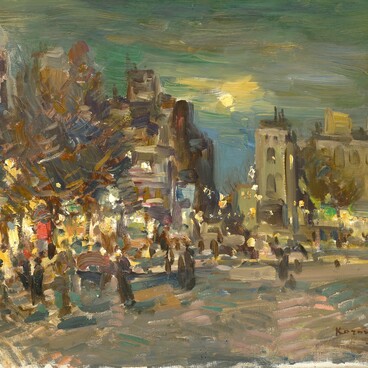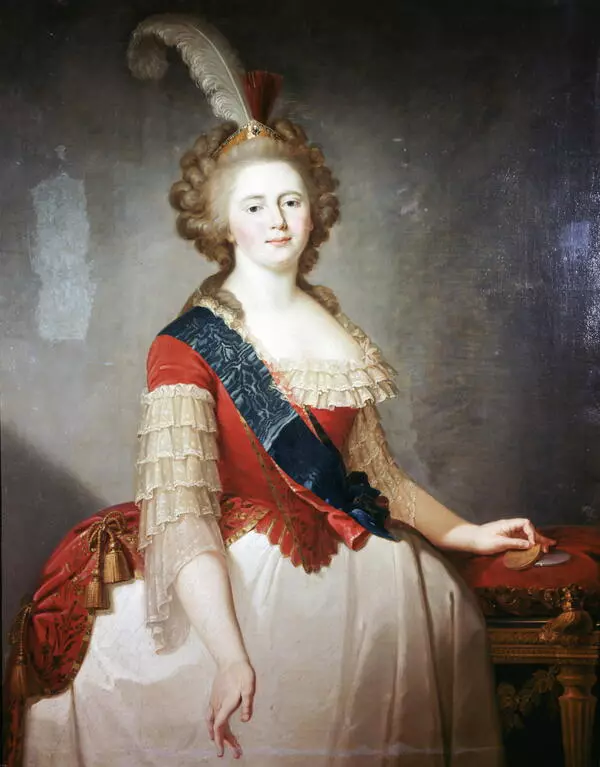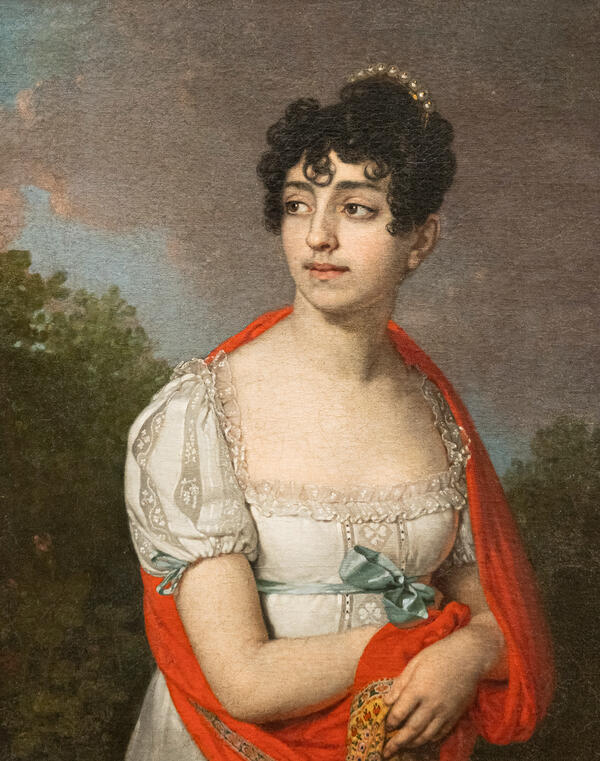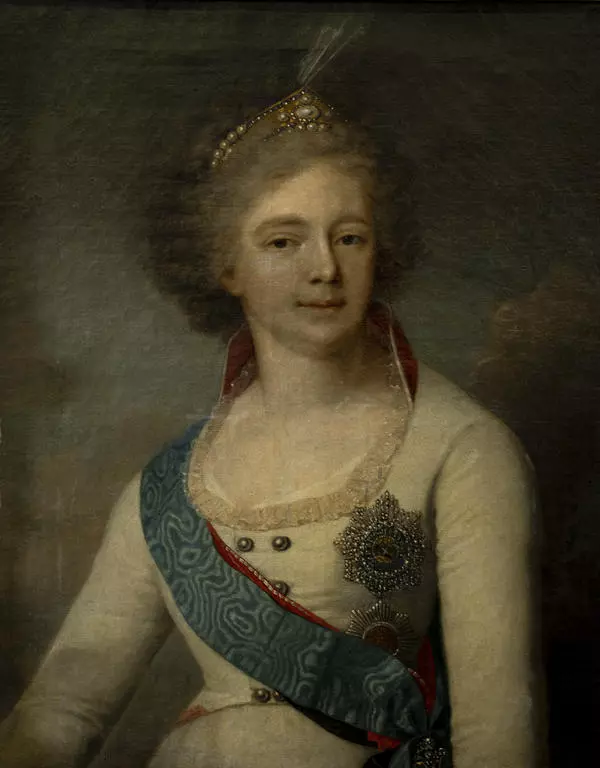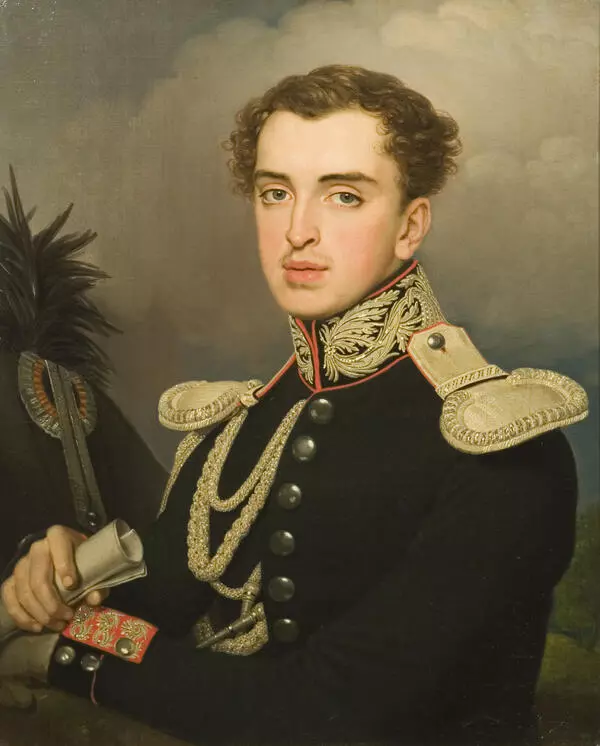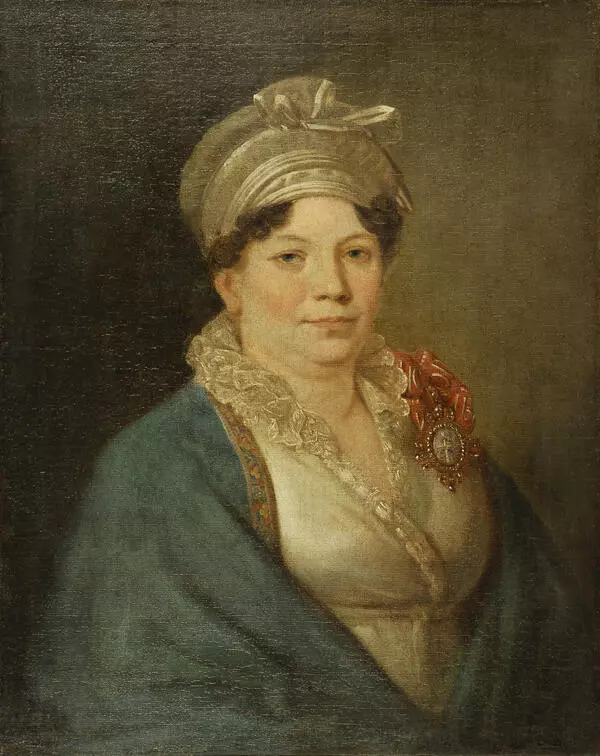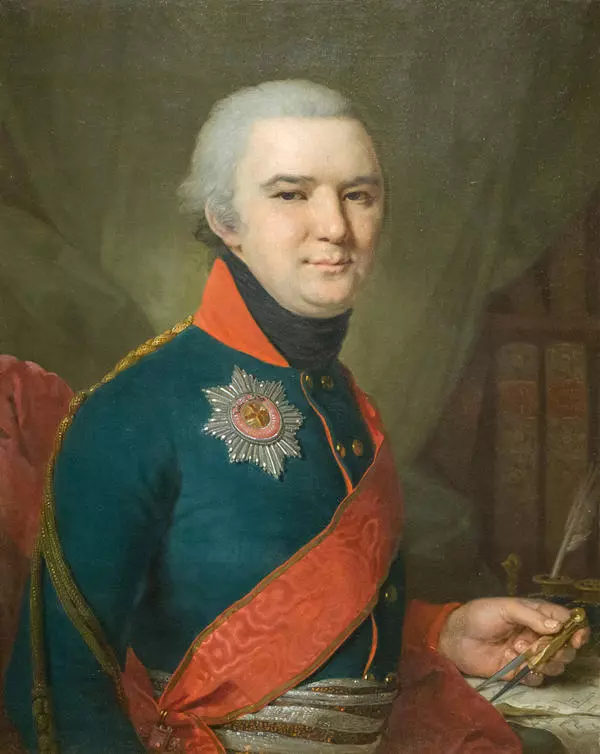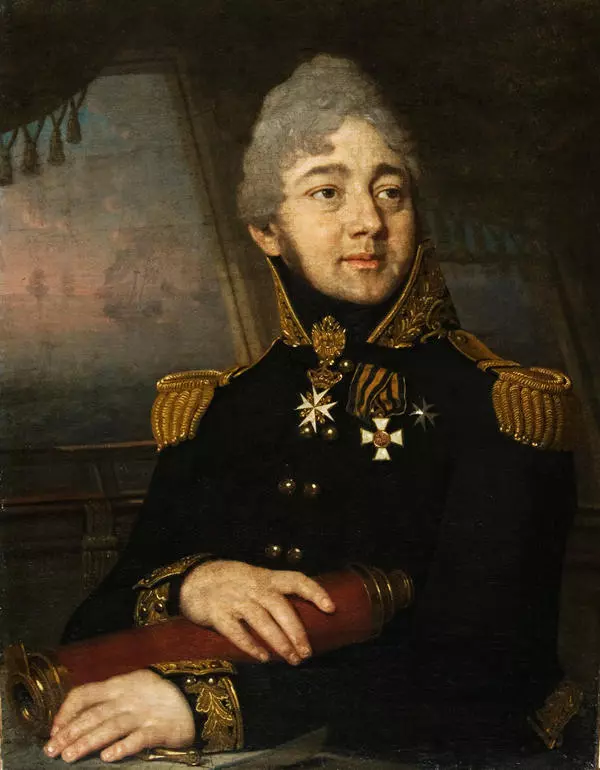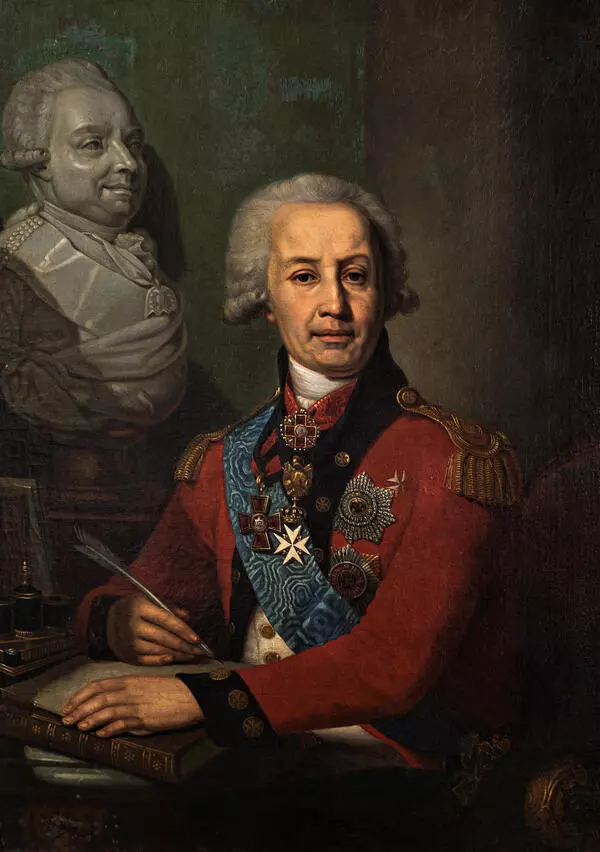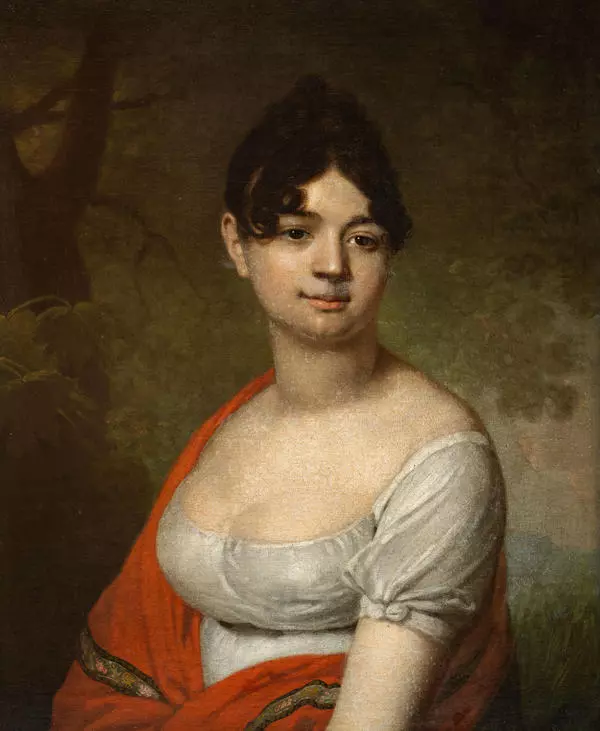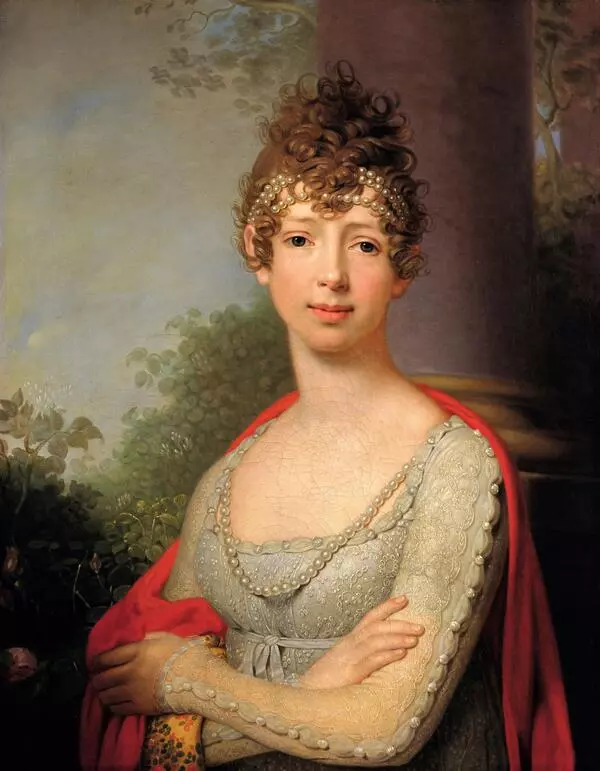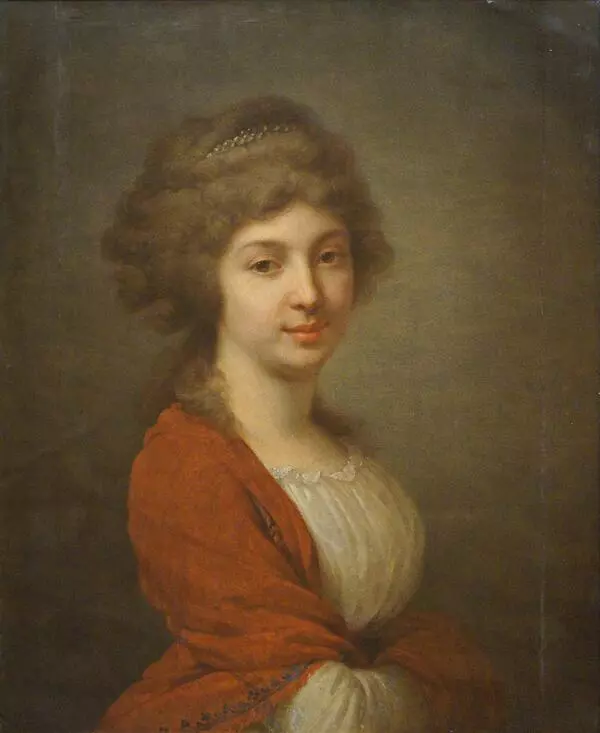Vladimir Borovikovsky (1757–1825) is considered one of the best ceremonial and home portrait artists. The master comes from a family of icon painters, so in his youth he joined the family business. At a more mature age, he entered the Imperial Art Academy. Among the teachers of young talent were such masters of painting as Dmitry Levitsky (1735-1822), Johann Lampi (1751-1830).
The works of Borovikovsky are characterized by a deep disclosure of the spiritual world and an accurate transmission of the individual characteristics of the model. The portrait of Alexander Bestuzhev belongs to the heyday of the master’s work.
The presented portrait shows a historically significant person Alexander Bestuzhev (1761–1810). In his youth, he received an excellent military education, took part in the hostilities of that time. However, the injuries received contributed to his resignation and the transition to a peaceful life.
Bestuzhev was successful not only in the military field; he had wide knowledge of French literature, collected paintings and antiques. He worked at the Academy of Arts and the Yekaterinburg Lapidary Factory. He was distinguished by advanced views on education and promoted the pedagogical approach, created by John Amos Comenius (1592-1670).
The painter depicted Alexander Bestuzhev in a portrait half-turned, dressed in an official suit. Such portraits were considered ceremonial or representative. The tasks of this type of image included not only a realistic transfer of a visual image, but also an accentuation of the achievements or social status of the model.
In this case, the artist informs the viewer about the professional activity of the model through details. The order of St. Vladimir is attached to the costume, which was awarded to him for literary achievements, as well as for services in the field of art and education. In the right hand of the Russian thinker there is a piece of paper, on the right there is a feather and an inkwell. All these elements create the image of an intelligent and educated person, actively working in the literary sphere.
The color scheme is designed in restrained warm, green and maroon shades. The portrait is distinguished by a laconic structured composition. The texture of the costume is rendered with great skill. The artist depicts the face of the model realistically and masterfully conveys individual features.
The works of Borovikovsky are characterized by a deep disclosure of the spiritual world and an accurate transmission of the individual characteristics of the model. The portrait of Alexander Bestuzhev belongs to the heyday of the master’s work.
The presented portrait shows a historically significant person Alexander Bestuzhev (1761–1810). In his youth, he received an excellent military education, took part in the hostilities of that time. However, the injuries received contributed to his resignation and the transition to a peaceful life.
Bestuzhev was successful not only in the military field; he had wide knowledge of French literature, collected paintings and antiques. He worked at the Academy of Arts and the Yekaterinburg Lapidary Factory. He was distinguished by advanced views on education and promoted the pedagogical approach, created by John Amos Comenius (1592-1670).
The painter depicted Alexander Bestuzhev in a portrait half-turned, dressed in an official suit. Such portraits were considered ceremonial or representative. The tasks of this type of image included not only a realistic transfer of a visual image, but also an accentuation of the achievements or social status of the model.
In this case, the artist informs the viewer about the professional activity of the model through details. The order of St. Vladimir is attached to the costume, which was awarded to him for literary achievements, as well as for services in the field of art and education. In the right hand of the Russian thinker there is a piece of paper, on the right there is a feather and an inkwell. All these elements create the image of an intelligent and educated person, actively working in the literary sphere.
The color scheme is designed in restrained warm, green and maroon shades. The portrait is distinguished by a laconic structured composition. The texture of the costume is rendered with great skill. The artist depicts the face of the model realistically and masterfully conveys individual features.



